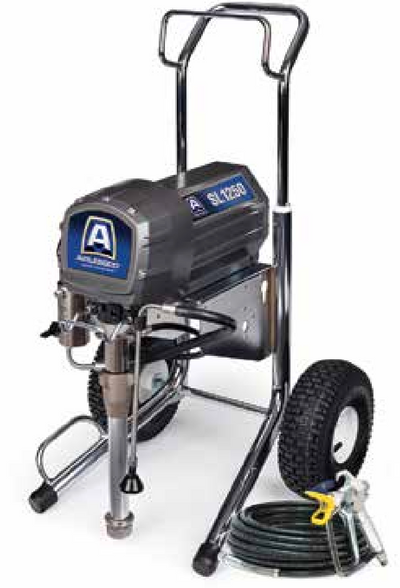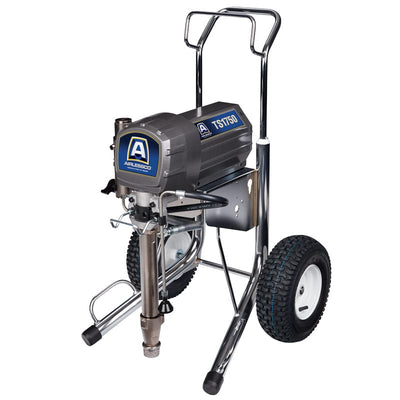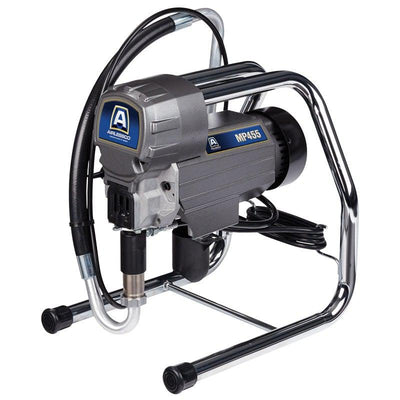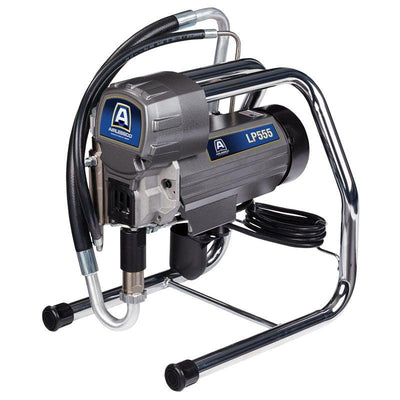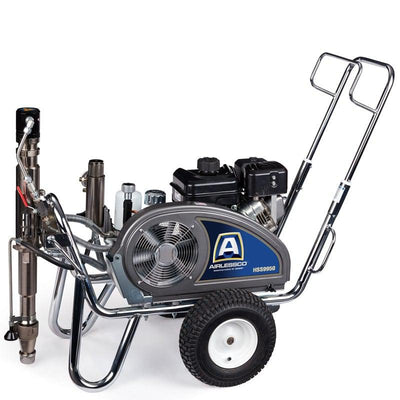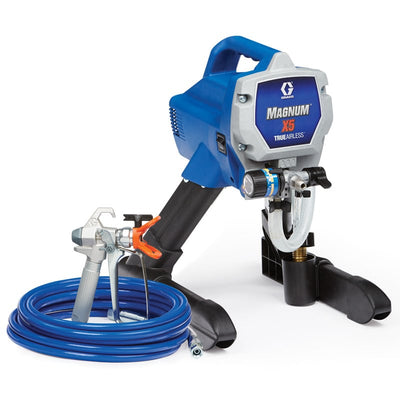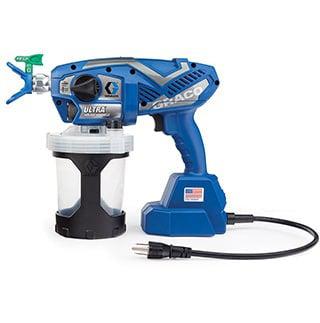How to choose an Airless Paint Sprayer – Complete Guide (with video)
Airless paint sprayers can represent one of the largest investments you as a paint contractor can make. Additionally choosing the right paint sprayer can ensure you are able to perform a variety of painting work that you may wish to complete. Whether you’re a home owner or a contractor or construction company, this guide will provide you the information you need to ensure you choose an airless paint sprayer that will be effective at performing the painting work you intend on doing.
First choice to consider with airless sprayers – How the Airless Sprayer is Powered
Airless sprayers can be powered by a gas engine, electric motor, or an air powered piston. Each type has its advantages and disadvantages which will briefly cover.
Electric Airless Sprayers
Electric airless sprayers are the most common type of airless paint sprayer used on the market. In relation to Gas and Air Powered Airless Sprayers they are typically available in a greater variety of configurations, mainly in relation to how much paint they will supply, this makes them one of the most cost effective options for spraying. However, the drawbacks of electric airless include that you need electric to drive the machine and that they are typically limited to 3300 PSI, making them less effective for thick coatings like some elastomerics and block fillers. A common electric airless is pictured below. If you have an electric power source though an electric airless is often the most cost effective option to begin spraying and can be used for higher volume work effectively as well.
Gas Powered Airless Sprayers
In addition to electric airless sprayers you also have gas powered airless sprayers. Within gas powered airless sprayers there are hydraulic and standard gas powered airless sprayers. The difference between the two is that a hydraulic gas powered airless sprayer takes the power from a gas engine to power a hydraulic motor which then drives the fluid section, the benefit of a hydraulic sprayer compared to a standard gas airless is that it can deliver greater performance both in potential gallons per minute and in pressure. For thick coatings like mastics and roof coatings or for pushing coatings long distances, a gas hydraulic airless sprayer can be the best option. A direct drive gas powered airless sprayer uses the gas motor to directly drive the sprayers fluid section, which generally makes the unit less expensive compared to a hydraulic airless sprayer. Additionally, many gas direct powered airless sprayers have an optional electric motor conversion kit allowing you to use the sprayer both with a gas engine or electric motor, though you will usually loose some performance when you use the electric motor. The main drawbacks of direct drive Gas airless sprayers relative to hydraulic units include that they do not typically deliver as much material and do not have as high of pressure options, which can limit them when spraying heavy thick coatings like roof coatings. However, compared to electric airless sprayers, gas powered airless sprayers typically offer higher GPM options, higher potential pressures, and do not require an electric power source, this makes them a great option for when you are working on exteriors or when you do not have power readily available on your job site.
Air Powered Airless Sprayers
Air powered airless sprayers utilize air that powers an air motor to move a sprayers fluid section. The benefits of these units include that they can offer high pressures and fluid deliver options, ranging up to 9000 PSI in pressure. Additionally, they can be a cost effective way to spray thick coatings like roof coatings. The main downsides to air powered airless sprayers include that you need a compressed air source, which means you may need additional equipment on a job site to be able to use one. However, if you have a compressor in a manufacturing plant or use a compressor for other job site work, they can be a cost effective way to get a high performance airless paint sprayer.
Second choice to consider when choosing an Airless Sprayer – Materials you would like to spray
The second critical factor to consider when choosing an airless sprayer is the coatings and materials you will want to spray. In general you can break the types of materials you will spray into 4 broad categories: texture materials like drywall mud, standard paints and coatings, plural component paints and coatings, and heavy solid coatings like roof coatings and mastics. Each type of coating will vary in how you can spray it effectively. For best results you should always check the technical data sheets of the paints you intend to spray to verify what pressure and tip size is required for the materials you will spray, pictured below is a technical data sheet with information highlighted on tip size and sprayer pressure. In addition you want to verify the pot life of your paint you will be spraying, if the pot life is less than 30 – 45 minutes you typically will need to consider a plural component airless sprayer. More on whether you may need a plural component sprayer can be found here. For spraying texture materials you generally have two types of textures, those with true aggregate include and those that are just mud like compounds. For texture material that has aggregate you typically need a dedicated texture sprayer where as for materials that are more mud based you can use a airless sprayer that can spray both texture and coatings or a texture only sprayer. Knowing the types of materials you will want to spray you can then check different airless sprayer specifications to see if they provide the needed gallons per minute and pressures that you need to spray your material, see the photo below for an example of an airless sprayer specification page. If you plan on having more than one painter working at a time you need to be sure your sprayer can provide enough gallons per minute to supply double the gallons per minute required for your paint you will be using to spray well. Please note there are sometimes other factors to consider, for example for thick heavy coatings like roof coatings you often times have to consider how to draw material into the airless sprayer pump, which can require a specific type of airless sprayer that is called a direct immersion sprayer, a direct immersion sprayer will have a special fluid section designed to draw thick coating well among other design features.
Sample Technical data sheet
Sample sprayer information
Examples of different airless sprayers
Electric Airless Sprayers
Direct Drive Gas Airless Sprayer
Hydraulic Airless Sprayer
Texture only Sprayer
Non Aggregate texture and paint sprayer
Air powered Airless Sprayer
Ultimately by knowing the material you will spray and where you will spray you can better determine which airless sprayer may be best for your work, as always you can also send us a message about whether a specific airless sprayer will work well for your needs.
.










